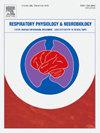Diagnostic pathways for earlier diagnosis and treatment towards better outcomes for adults living with chronic breathlessness
IF 1.6
4区 医学
Q3 PHYSIOLOGY
引用次数: 0
Abstract
Chronic breathlessness is a common and distressing symptom, negatively impacting physical function and quality of life. Many individuals presenting with chronic breathlessness wait years for an explanatory diagnosis, leading to delays in accessing effective treatments and worse individual outcomes including premature mortality. In addition, delays to diagnosis are associated with increased healthcare utilisation and therefore potentially avoidable burden on healthcare systems. Diagnosing the underlying causes of chronic breathlessness is complex and can be challenging for clinicians. The current clinical diagnostic approach, related guidelines, and healthcare service structure are typically aligned with a disease-based focus. For this article, we are using a working definition of ‘Chronic Breathlessness’ to infer breathlessness that has persisted for at least eight weeks. In this narrative review, using the latest available evidence, we aimed to describe a symptom-based approach to diagnosis for adults presenting with chronic breathlessness alongside describing the potential for this approach to improve both clinical outcomes and efficiency for healthcare systems. Therefore, our objectives were to: 1) summarise what is currently known about the time to diagnosis for adults presenting with breathlessness, 2) describe the impact and possible explanations for the current delays to diagnosis, 3) describe potential solutions towards an effective symptom-based diagnosis, 4) review the potential for Artificial Intelligence (AI) to support several areas along the diagnostic pathway for breathlessness, 5) describe how a symptom-based approach to diagnosis can be directly utilised to enable a ‘matched’ personalised holistic approach to treatment.
早期诊断和治疗成人慢性呼吸困难的诊断途径,以获得更好的结果
慢性呼吸困难是一种常见且令人痛苦的症状,对身体功能和生活质量产生负面影响。许多患有慢性呼吸困难的人等待数年才能得到解释性诊断,导致获得有效治疗的延误和更糟糕的个人结果,包括过早死亡。此外,诊断延误与医疗保健利用的增加有关,因此可能会给医疗保健系统带来可避免的负担。诊断慢性呼吸困难的根本原因是复杂的,对临床医生来说可能是一个挑战。目前的临床诊断方法、相关指南和医疗保健服务结构通常与基于疾病的重点保持一致。在本文中,我们使用“慢性呼吸困难”的工作定义来推断持续至少8周的呼吸困难。在这篇叙述性综述中,我们利用最新的证据,旨在描述一种基于症状的方法来诊断成人慢性呼吸困难,同时描述这种方法改善临床结果和医疗保健系统效率的潜力。因此,我们的目标是:1)总结目前已知的成人呼吸困难的诊断时间,2)描述当前延迟诊断的影响和可能的解释,3)描述基于症状的有效诊断的潜在解决方案,4)回顾人工智能(AI)在支持呼吸困难诊断途径的几个领域的潜力。5)描述如何直接利用基于症状的诊断方法来实现“匹配的”个性化整体治疗方法。
本文章由计算机程序翻译,如有差异,请以英文原文为准。
求助全文
约1分钟内获得全文
求助全文
来源期刊
CiteScore
4.80
自引率
8.70%
发文量
104
审稿时长
54 days
期刊介绍:
Respiratory Physiology & Neurobiology (RESPNB) publishes original articles and invited reviews concerning physiology and pathophysiology of respiration in its broadest sense.
Although a special focus is on topics in neurobiology, high quality papers in respiratory molecular and cellular biology are also welcome, as are high-quality papers in traditional areas, such as:
-Mechanics of breathing-
Gas exchange and acid-base balance-
Respiration at rest and exercise-
Respiration in unusual conditions, like high or low pressure or changes of temperature, low ambient oxygen-
Embryonic and adult respiration-
Comparative respiratory physiology.
Papers on clinical aspects, original methods, as well as theoretical papers are also considered as long as they foster the understanding of respiratory physiology and pathophysiology.

 求助内容:
求助内容: 应助结果提醒方式:
应助结果提醒方式:


